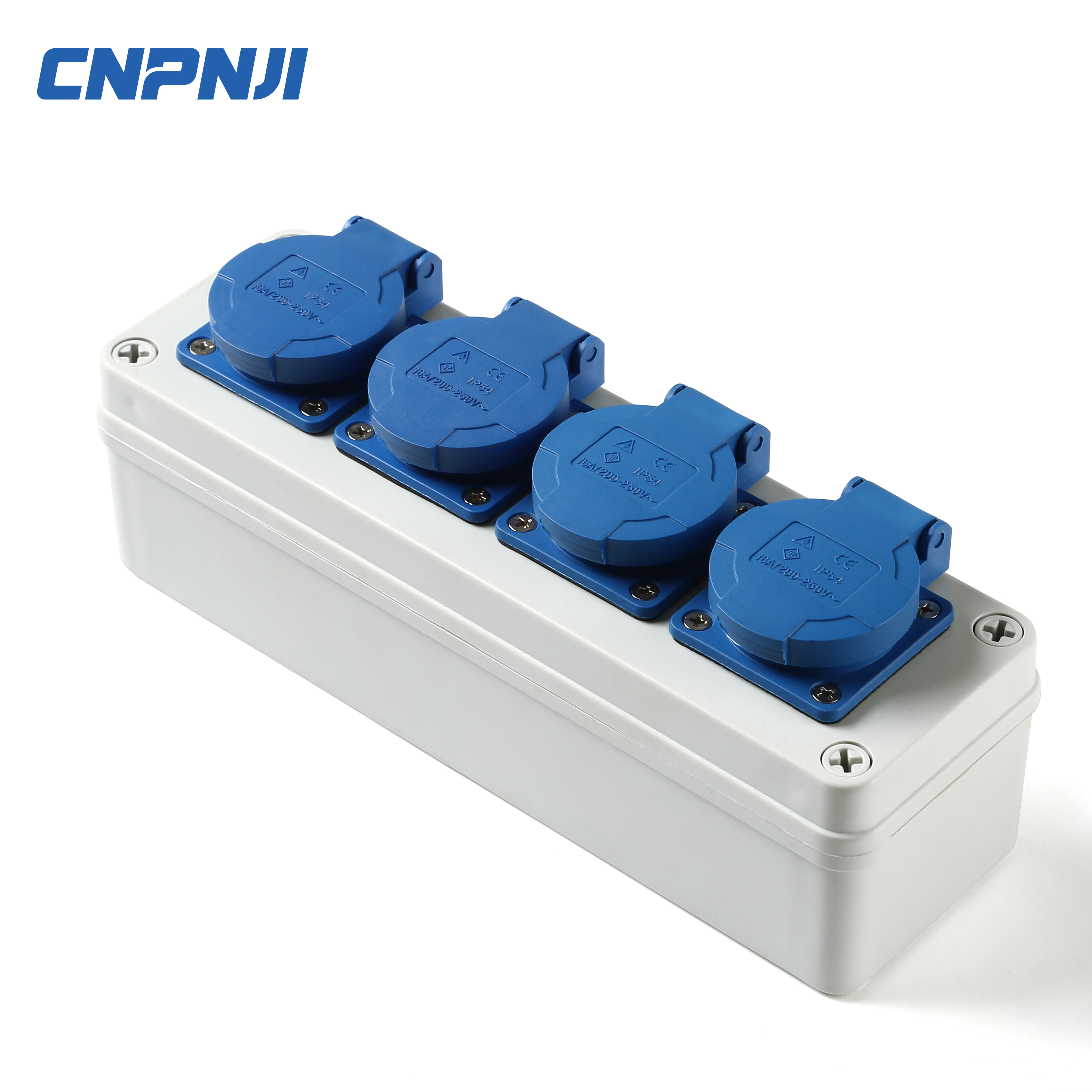Hero
Today, we will delve into the world of socket boxes in detail, from their construction, types, to safety precautions that need to be taken during use, to explore the truth.
A socket box, as the name suggests, is a box that centrally installs multiple sockets. It is usually used in households and public places to facilitate users in connecting various appliances. The design of the socket box is very user-friendly, not only considering the convenience of use, but also putting safety first. Structurally, a standard socket box typically consists of several parts, including a housing, socket module, wiring terminals, and protective devices. The shell is mostly made of flame-retardant materials, which can effectively prevent the occurrence of fires; The socket module is designed with multiple specifications according to different current requirements; The wiring terminals ensure a secure connection of the wires; Protective devices such as overload protection switches can promptly cut off power in case of circuit abnormalities, ensuring electrical safety.
When it comes to the types of socket boxes, the market can be described as diverse, but they can be roughly divided into two categories: household and industrial. Household socket boxes are mostly small and lightweight, with relatively simple functions; Industrial socket boxes are even more complex, as they not only need to carry larger currents but also have protective functions such as waterproofing and dust prevention to adapt to complex industrial environments. In addition, there are also some socket boxes with special functions, such as those with USB charging ports, integrated smart home control modules, etc., all of which are designed to meet the diverse electricity needs of modern people.
When using socket boxes, safety is a key point that we have to pay attention to. Firstly, it should be clear that safe use of electricity is always the most important. Before using the socket box, we should check for obvious damage, especially if the cables are exposed or broken. When connecting electrical appliances, it is important to ensure that each socket in the socket box does not exceed its rated maximum current value. For example, the rated current of a regular household socket is usually 10A or 16A. If multiple high-power appliances are connected simultaneously, it is easy to cause overload and cause safety accidents. In addition, avoid using socket boxes in humid environments, as water is a good conductor of electricity. Once moisture enters the interior of the socket box, it is highly likely to cause short circuits or even electric shock accidents.
With the advancement of technology, modern socket boxes have also made significant progress in intelligence. Some smart socket boxes can be remotely controlled through mobile apps, which can not only switch on and off electrical appliances remotely, but also monitor electricity consumption, helping users better manage their home's electricity consumption. Moreover, it can interact with other smart home devices at home to achieve automated home life.
In today's world where energy conservation and environmental protection are increasingly valued, the design of socket boxes also places greater emphasis on environmental protection. High quality socket boxes should be made of environmentally friendly materials, free of harmful substances, which are both safe and reduce their impact on the environment. At the same time, some socket boxes also adopt energy-saving design, such as sockets with LED indicator lights. Although these small changes may not seem obvious, over time, the energy savings are also very considerable.
In short, although the socket box is small, it is related to the safety and convenience of our daily life. Understanding its basic knowledge, choosing and using it correctly can not only make our lives more colorful, but also ensure our electricity safety. Remember, electrical safety cannot be ignored, and even a small socket box can become a "hero" guarding the home.

